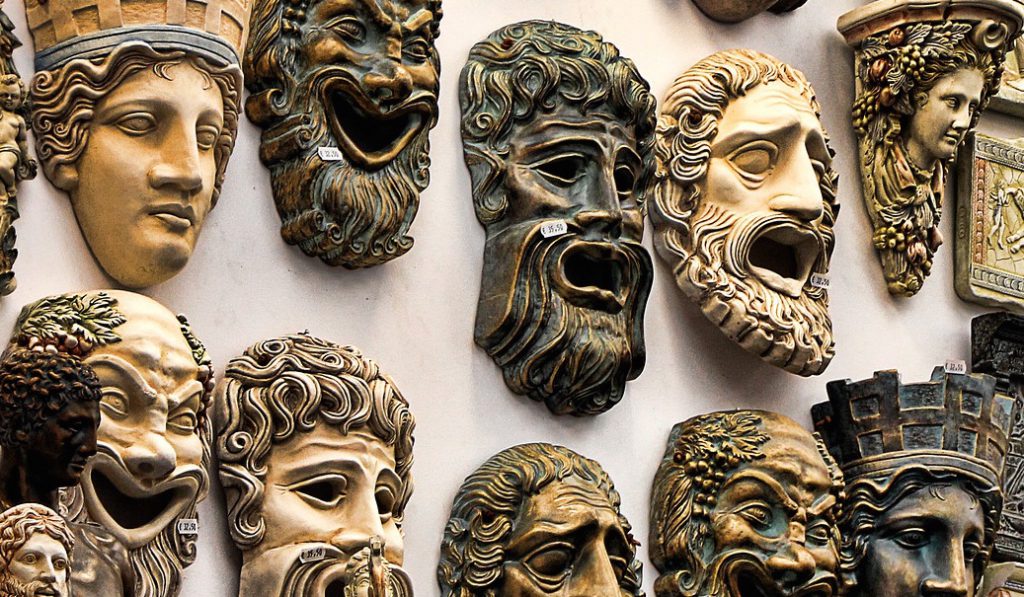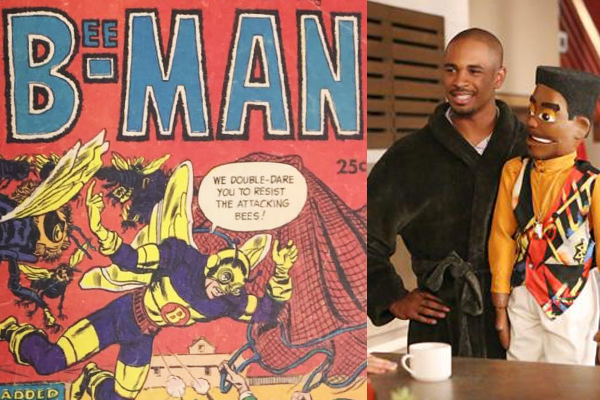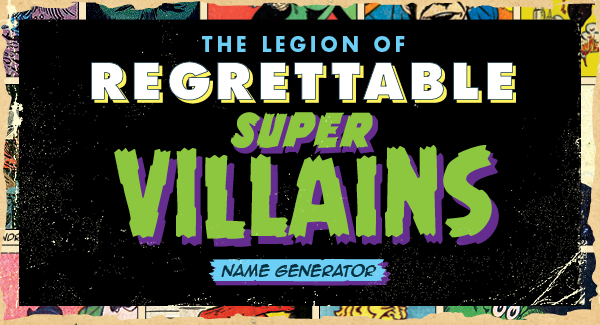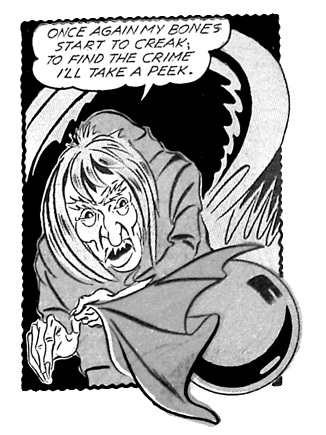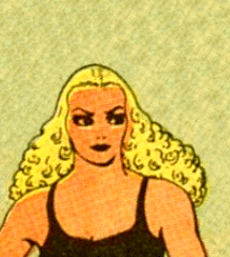The Most Regrettable Mythological Figures
If you’ve read The Legion of Regrettable Supervillains by Jon Morris, you know he delivers on all things regrettable in the best possible way. But regrettable, larger than life figures didn’t start with comic books; mythology is chock-full of them! Here’s a taste of some of the most regrettable gods, monsters, and the folks who got mixed up with them.
Pasiphaë
We’ve got to start with Grecian myths, because their combination of regrettable-ness and batshit craziness is too wonderful to ignore. Take, for example, Pasiphaë.
Queen Pasiphaë was the wife of King Minos, who was really, really, really full of himself, and said that his reign was so blessed by the gods, he could pray for anything and it would appear. This, naturally, did not go unchallenged, so Minos prayed to Poseidon for a glorious bull the likes of which the world had never seen before, adding a PS that if Poseidon sent the bull, Minos would sacrifice it right back to him. Poseidon sent the bull, but Minos was so taken with the creature that he didn’t want to give it up, so he sacrificed another bull instead. Poseidon, a little miffed on Minos’ welch, made Pasiphaë fall in madly love with the bull, laughed at his little bit of poetic justice, and went back to doing whatever sea-gods do in their spare time (backgammon?).
Pasiphaë, however, was a woman who got what she wanted, and what she wanted was some of that sweet, sweet bull. Pasiphae hired genius inventor Daedalus to construct a realistic cow that not only would allow her to hide inside, but also would be irresistibly sexy to the bull of her desires. Daedalus must have had his finger on the pulse of bovine-attractiveness, because it wasn’t long after Pasiphaë rolled out into the pasture in her cow-cosplay that the bull took a liking to her.
While it would be nice to say this was the end of it, with everyone getting what they wanted, that was sadly not the case. Pasiphaë gave birth to the half-human, half-bull Asterius, who was later called “Minotaur,” by people who like mean puns. Minos put Asterius at the center of a labyrinth, because being in one myth wasn’t near enough for him, and he figured some jerk would need a heroic quest at some point.
Ixion
Hoo boy, this guy. So, King Ixion loved Dia, but being the notorious skinflint that he was, refused to pay a dowry to Dia’s father Deioneus. Deioneus, no winner himself, decided to take the dowry himself by stealing some of Ixion’s prize horses. Ixion, not to be outdone in over-reactions, took his father-in-law by the hand and shoved him into a bed hot coals, burning him alive.
Now, this is not something that happens everyday, even in mythological Greece, and guilt over his act drove Ixion insane. Zeus took pity on the guy—Ixion’s father was Ares, so we guess Zeus can be forgiven for having a soft-spot for his grandkids—and brought him up to Mount Olympus. Ixion, never one to bask in good fortune when he could make things weird between his extended family, immediately seduced his grandmother, Hera. Zeus had just as much trouble believing this as you do reading it, so he made a cloud that looked like Hera as bait, to see if Ixion would risk his cushy seat with the gods to…well, yeah.
Ixion took the bait and Zeus strapped him to burning wheel to spin on throughout eternity. Because Ixion had to get that talent for over-reacting from someone.
Agares
Christian mythology is not without its regrettable characters as well. Take Agares, a demon with the fearsome visage of…a little old man on a crocodile. He may have a hawk in hand, or in place of a hand, because nothing improves a fly bird of prey like permanently attaching it to the withered arm of diminutive geriatric. Somehow, despite being the ruler of the eastern zone of Hell, Agares spends his time cataloguing and teaching people ethnic slurs. Agares has the ability to make “those who run stand still,” which is pretty weak as curses go. He’s pretty much the demonic equivalent of that old guy who sits next to you on the bus, and can’t wait to tell you that racist joke he knows. And has a bird for a hand.
Lady Midday
This weirdo from Slavic mythology shows up in the hottest part of the day, peppering fieldworkers with dumb riddles, difficult questions and unasked-for small talk. A firm believer in spoiling the serenity of a lunch break, Lady Midday doesn’t cotton to subject changes or incorrect answers; anger her, and she’ll cut your head off with a scythe, a pair of scissors, or a cutting bon mot. Descriptions of Lady Midday vary—she could be a young girl, a beautiful woman, or an old hag—but no matter what she looks like, she’s going to bore you to tears.
Kappa
Before turtles got teenaged and mutant and ninjas, there were kappas. While details vary depending on regional peccadilloes, these grumpy amphibians of Japanese mythology are usually described as about human size and shape, but with multi-colored skin, and turtle shell and webbed hands and feet. But our personal favorite kappa detail is the flat area on the top of their head, where they keep a puddle of water. This head-full of river water is the source of a kappa’s power, and should they spill it, well, that’s the end of the kappa. Some kappa apparently recognize this glaring weakness, and cover their heads with helmets or, in the case of the truly destitute, an inverted plate.
Even with these precautions, you can still get the better of a kappa by appealing to their unending sense of politeness. Bow deeply, and the kappa with be forced to match your bow, spilling their precious head-water. If you re-moisten a dried-out Kappa, you’ll have a faithful servant for all eternity. Because who wouldn’t want a moist, smelly amphibian following you around wherever you go?
Chinnamasta
This Hindu and Buddhist goddess is the goddess of self-sacrifice, and because gods are nothing if not literal, she is portrayed as having cut off her own head with three spurts of blood flow from her open neck. Because self-sacrifice means nothing without others, Chinnamasta is shown with two female attendants, drinking the spurting blood from the wound where her head used to be. ‘Cause heads are for mortals, baby.
There’s many stories about how Chinnamasta got into this predicament, but perhaps the most regrettable involves the goddess and her attendants enjoying some midday bathing. As anyone who’s been to a waterpark can attest, swimming is hungry work, and no one had thought to bring snacks. Chinnamasta solves the issue immediately by cutting off her own head and allowing her attendants to drink her blood. So, everybody wins, in the absolute grossest way possible.

Jadzia Axelrod
Jadzia Axelrod is an author, an illustrator, and a world changer. Throughout her eventful life she has also been a circus performer, a puppeteer, a graphic designer, a sculptor, a costume designer, a podcaster and quite a few other things that she’s lost track of but will no doubt remember when the situation calls for it.She is the writer and producer of “The Voice Of Free Planet X” podcast, were she interviews stranded time-travelers, low-rent superheroes, unrepentant monsters and other such creature of sci-fi and fantasy, as well as the podcasts “Aliens You Will Meet” and “Fables Of The Flying City.” The story started in “Fables Of The Flying City” is concluded in The Battle Of Blood & Ink, a graphic novel published by Tor.She is not domestic, she is a luxury, and in that sense, necessary.
